Central Park is New York’s backyard and is so popular that over 40 million people visit it annually. It is not just a tourist attraction as locals also flock to the park. It is one of the favorite places for many locals to relax, catch some sun or do some physical activity. The park is located and stretches from upper Midtown, Manhattan to the southern part of Harlem. It covers 1.4 square miles, all the way from 59th Street (Central Park South) to 110th Street (Central Park North). From baseball fields and bike paths to a zoo, Central Park truly has it all. It would take too many days to explore all of Central Park, so we’ve put together a guide with all the must-see spots.
107th United States Infantry

One of the many war memorials in Central Park, this memorial is dedicated to the soldiers who served and died in World War I. The sculptor, Karl Illava, was a sergeant with the 107th Infantry Regiment. He captured in his memory the thousands of emotions and physical reactions to war. The seven life-size figures depict both the aggressive attitude of battle, as well as the relative care of wounded comrades.
Alice in Wonderland

In 1959, philanthropist George Delacorte commissioned this bronze statue as a gift to the children of New York. Inspired by Lewis Carroll’s funny characters in the classic Alice in Wonderland, the sculpture was also intended to pay tribute to his wife, Margaret, who read Alice with their children. The sculpture is a favorite with children, who love to climb to the top, explore the variety of textures and hidden spaces. Over the years, thousands of tiny hands have literally polished parts of its surface. The sculpture was created by the sculptor José de Creeft who modeled the face of Alice from the daughter of Donna Maria and the Mad Hatter from George Delacorte
Andrew H. Green Bench

The bench was donated by the Andrew Haswell Green Memorial Association, which was founded in 1904 to raise money for a memorial to the man often called the “Father of Great New York.” The site in Central Park was deemed appropriate because of its essential role in its creation and operation. Green was instrumental in selecting the original plan for the Park and served as chairman and auditor of the Board of Park Commissioners, and its first trustees. Greene also helped found many of the city’s cultural institutions, including the Metropolitan Museum of Art and the American Museum of Natural History.
Artists’ Gate
Central Park has 20 entrances, all of which bear an inscription honoring local New Yorkers of note, such as scholars, artists and craftsmen. Artists’ Gate is located on 59th Street directly across from the iconic Avenue of the Americas (6th Avenue). Although it is referred to as the Artists’ Gate, there is no gate that opens and closes, but there is an engraved plaque with its name on the low wall surrounding the park. Traditionally, the gates of Central Park have been great meeting places for friends and groups visiting the park and remain an interesting tribute to the people who made New York City such a great city.
Balto

In January 1925 Alaskan doctors feared that a deadly epidemic of diphtheria would spread among the children of the town of Nome. Medicines to stop the spread were available, but doctors would have to travel nearly 700 miles to Anchorage to get them. More than 20 sleds were coordinated to make the journey through blinding snow and sub-zero temperatures. Led by Balto, the team covered 674 nightmarish miles and made it back to Nome in 20 hours. Newspapers and radio stations around the world followed the trek, fascinated by the brave team whose efforts eventually helped end the epidemic. Balto became a national hero. Just 10 months after its successful mission, this statue, by sculptor Frederick Roth, was dedicated in Central Park.
Belvedere Castle
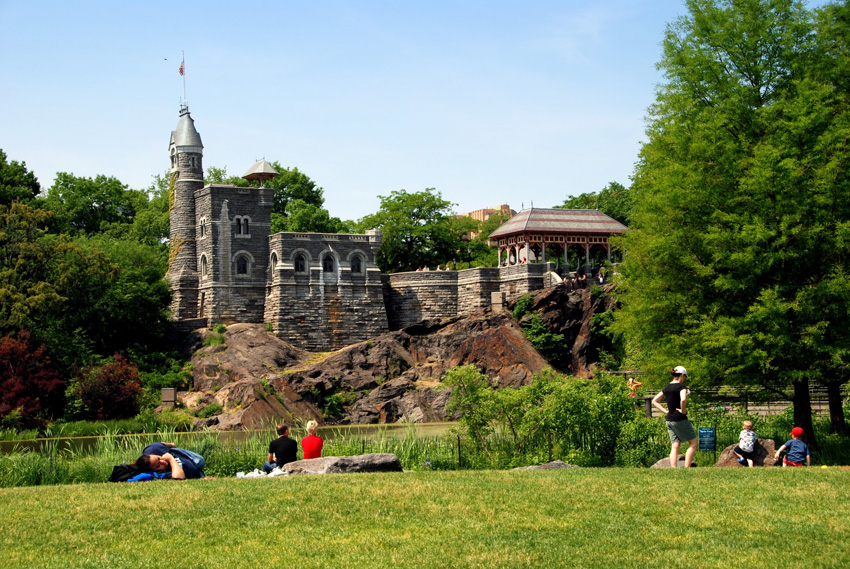
Belvedere Castle is a building in New York City’s Central Park that includes exhibition halls and an observation deck. Since 1919, the castle has also been home to Central Park’s official weather station.
Built in Victorian style in 1869, the castle covers Vista Rock, the second highest natural elevation in the park. It is made of Manhattan slate quarried in the park and clad in gray granite, and sits atop the Ramble woodlands. As the plants have grown, the castle has disappeared from its original view. Its turret is the highest point in the park.
Belvedere means “beautiful view” or “panoramic view” in Italian, and the castle offers spectacular views of Central Park and New York. It was designed as an additional feature of Central Park in the “Greensward” plan by architects Calvert Vaux and Jacob Wrey Mould, who, along with Frederick Law Olmsted, were appointed to oversee the construction of the park in 1865.
Beginning in 1919, it housed the New York Weather Observatory. Today’s weather station in Central Park, an Automated Surface Observing System (ASOS), is located south of the castle, but the wind energy equipment is still located in the central tower. The two fanciful wooden pavilions deteriorated without painting and maintenance and were removed before 1900. After the New York Weather Observatory’s equipment moved to its offices in Rockefeller Center in the 1960s, Belvedere Castle was closed to the public and subject to vandalism, neglect and deterioration. After an extensive renovation and restoration of the damage, the castle was opened on May 1, 1983.
Bethesda Terrace

Bethesda Terrace is a spectacular area overlooking The Lake in New York’s Central Park.
It is on two levels, joined by two large staircases and a smaller one that passes under Terrace Drive to provide access to the Elkan Naumburg Bandshell and The Mall, which is the architectural highlight, in the center of the park.
The upper section provides access to 72nd Street Cross Drive and panoramic views of The Mall, and the lower section is a step up to lake views. The reddish colored stone is New Brunswick sandstone, with a harder stone for the pedestals, with granite steps and herringbone paving with Roman brick at the edges.
Bethesda Terrace was converted into an outdoor dining area in the late 1960s, then became a hippie hangout of the era, before becoming a drug den in the 1970s. The fountain, which had been dry for decades, was restored in 1980-81 by the Central Park Conservancy as the centerpiece of its Central Park renovation plan. The surrounding area was restored during the following period, its stonework was dismantled, cleaned, the damaged surfaces were removed and restored.
Fifty new trees, 3,500 shrubs and 3,000 ground plants identified by Philip Winslow were planted in 1986, most of which were removed in 2008 to make room for plants imported from the United States. The ceiling tiles of Minton’s gallery between the side stairs, designed by Mould, were removed in 1987, cleaned, restored, supplemented with additional new tiles and reinstalled in 2007.
Following an image in an 1891 book today, the lower part of the basin once again has water lilies, lotuses and papyrus, grown in removable containers.
Bethesda Fountain

The Bethesda Fountain, is one of the largest fountains in New York, being twenty-six feet high and ninety-six feet wide.
It is one of the most famous fountains in the world, and the statue at its center is the only sculpture that was commissioned as part of the original plan for Central Park.
Also known as the Angel of the Waters, this neoclassical sculpture features an eight-foot bronze angel standing over four small cherubs representing health, purity, temperance and peace.
The angel himself carries a lily in one hand, while the other remains outstretched, prepared to give a blessing to the water that pours around his feet and into the basin below him. It was created to celebrate the opening of the Croton Aqueduct in 1842, which supplied New York with fresh water.
Angel of the Waters was designed by Emma Stebbins in 1868 and dedicated in 1873. Stebbins became the first woman to receive a commission for a major work of art in New York City.
Bow Bridge

The first cast iron bridge in the park (and the second oldest in America), the bridge is named for its striking shape, reminiscent of a violinist’s bow or bow. This beautifully designed cast iron bridge spans The Lake, connecting Cherry Hill to the Ramble Forest. When planning the park, the commissioners called for a suspension bridge. The designers settled for this refined, low-rise bridge. Today, the Bow Bridge is one of New York’s most romantic locations and a magnet for photographers.
Bethesda Terrace Arcade

Bethesda Terrace Arcade is the arched indoor walkway that connects The Mall to Bethesda Fountain and The Lake. Built in the 1860s, the Arcade features a stunning tiled ceiling designed by Jacob Wrey Mould.
Charles A. Dana Discovery Center

The Charles A. Dana Discovery Center is one of the main visitor centers in the park and opened in 1993. It hosts a wide range of environmental programs designed for younger visitors to enjoy. Educational workshops teach the importance of the flora, fauna and wildlife found within the park boundaries, and the catch-and-release fishing program teaches children how to fish using traditional rods and bait. The visitor center is open in the summer from 9:00 A.M. to 7:00 p.m. and 10:00 a.m. and 5:00 p.m. the rest of the year.
Carousel

The current carousel was installed in the park in 1951, but dates back to 1908. Considered an important historical work of American folk art, it consists of 57 horses and two chariots that “gallop” along to music played by a mechanical organ. The current carousel is the fourth at this location. To the Park’s planners, commercial amusements such as carousels conflicted with their vision of the Park as a free escape from urban life, but it was nevertheless installed in 1871 and remained a popular addition. The first carousel was powered by a large horse or mule, while later models were electric.
Central Park Zoo
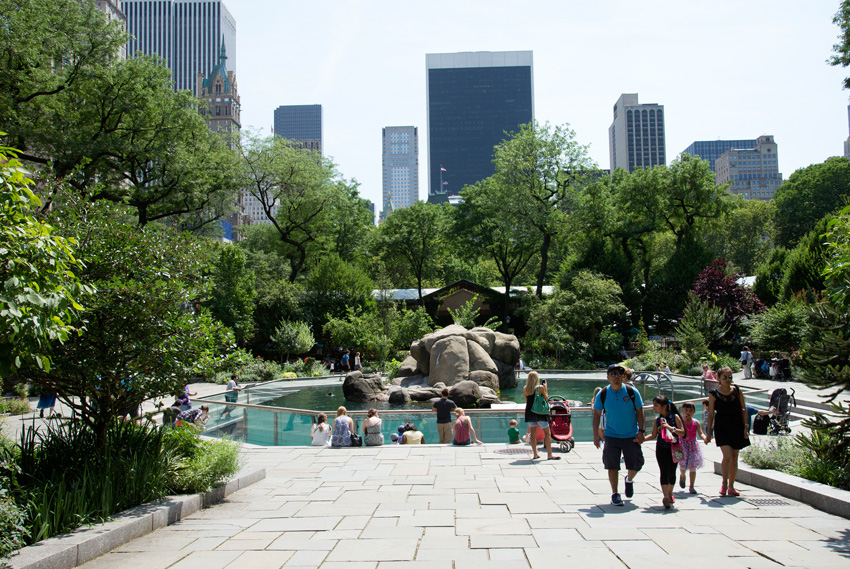
Just feet from 5th Avenue is the Central Park Zoo, home to over 130 species, from Snow Leopards to tiny ants. A stroll through the zoo’s 20-plus acres will take you through a variety of habitats, all carefully designed to recreate the natural environment of the animals they host.
Cherry Hill
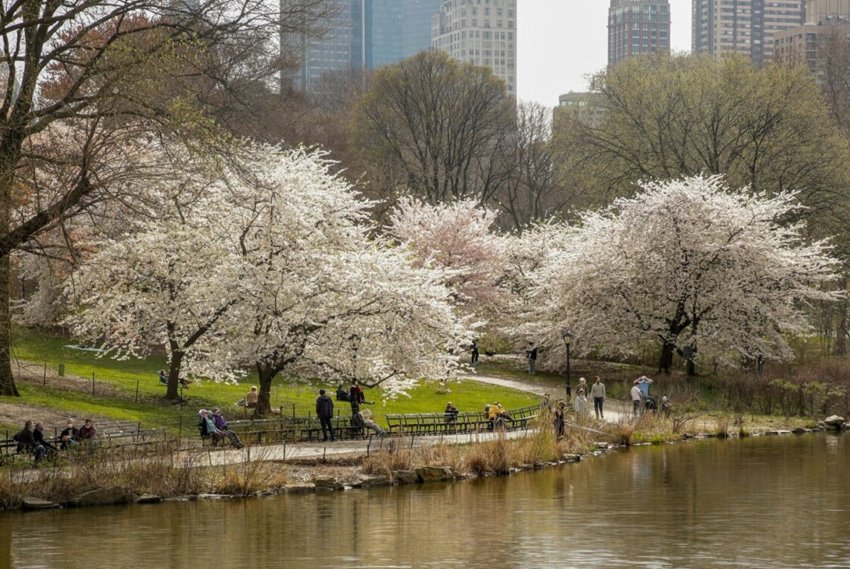
On 72nd Street, Cherry Hill overlooks the lake and is famous for its beautiful cherry trees and 14-foot fountain. What was originally designed to be a picturesque watering area for the horses and carriages that passed through the park in the 1860s is now a quiet and romantic part of the park that can only be reached on foot or by carriage. Just east of the Bethesda Fountain, the Cherry Hill Fountain is easily identified by its distinctive glass lamps.
Cherry Blossom Trees in Central Park

In the spring from April to May, the cherry blossoms in Central Park attract nature lovers from all over the world. It’s easy to see why, as the magnificence of their blooms is as stunning as it is explosive. The full bloom of the cherries is a sight to behold, and is usually achieved within a week of the first buds opening. They symbolize the fleeting nature of life, as their season is short-lived and the blossoms linger for a while before dropping their delicate petals to the ground, covering it with a pink and white blanket. Cherry blossom trees in Central Park are found primarily between 72nd Street and 96th Street, with the highest concentrations around the Reservoir, Cherry Hill, Pilgrim Hill, Great Lawn, Cedar Hill, and the area just south of Cedar Hill between 74th and 77th.
Chess & Checkers House

It’s true that you can play chess and checkers in almost any park in New York, but only at the Chess & Checkers House can you borrow pieces for your game. Dominoes and backgammon are also available.
The 24 tables surrounding this rustic pagoda feature plenty of shade, perfect for playing any time of year. If you don’t have a teammate, park staff will help you find one.
This spot is frequented by those who play chess almost every day. It is a great spot for new players to improve their technique.
The Chess and Checkers House stands a short distance south-west of the Dairy, perched on the great jutting rock once known as the Kinderberg. Built in 1952, the octagonal red and cream brick structure has indoor and outdoor tables that attract players of all ages.
Conservatory Water

Based on the design of the Grand Basin Lake located in the Luxembourg Gardens in Paris, Conservatory Water is a peaceful place to enjoy boat modeling in downtown New York. During the winter months, the lake is used for ice skating, while the rest of the year, it hosts some of the world’s most beloved model boat races. Curbs Boathouse also has a cafe, with a variety of light snacks and drinks. It has a wonderful patio with beautiful, seasonal flower beds.
Conservatory Garden

The 8-acre Conservatory Garden is a quiet hidden oasis. It is the only formal garden in Central Park and its peaceful atmosphere without runners and cyclists makes it an ideal place for relaxing walks or even weddings. The garden was designed by Gilmore D. Clarke and consists of seasonal plants arranged in three styles: English, French and Italian. The Conservatory Garden is entered through the Vanderbilt Gate and from here, you can walk past the English-style magnolias and lilacs to the rest of this manicured garden.
Dairy Visitor Center

What was once the Central Park Dairy, built to provide children with milk in the late 19th century, is now an information center and gift shop for visitors to Central Park. Built at the southern end of the park, the Victorian Gothic style building with its impressive windows and bells is easily recognizable and a great meeting and starting point for your Central Park adventures. The visitor center is open in the summer from 9:00 A.M. to 7:00 p.m. and 10:00 a.m. and 5:00 p.m. the rest of the year.
Cop Cot
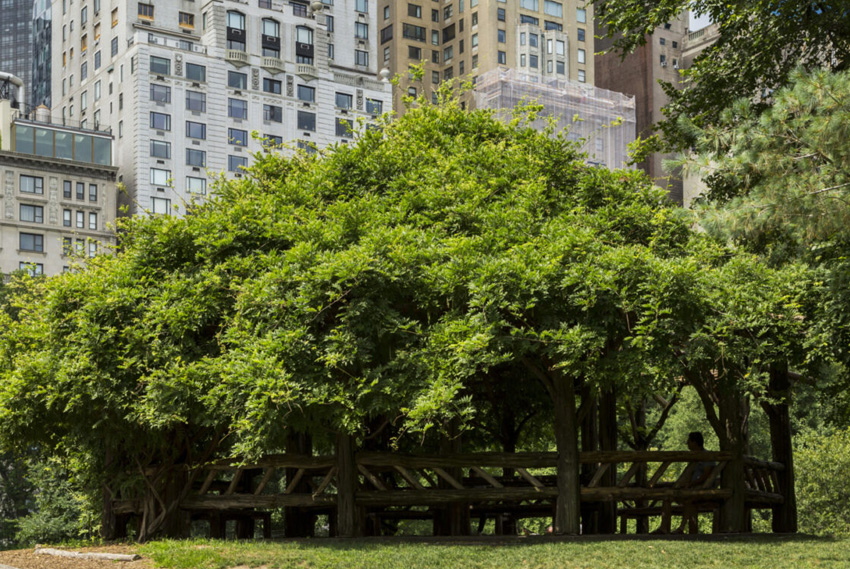
Near the 6th Avenue entrance, the Cop Cot is a natural log gazebo perched atop a hill overlooking Central Park South. Popular with those looking to get married in the park, the Cop Cot is one of the oldest structures in the park and provides shade from the summer sun and winter rains.
Delacorte Theater
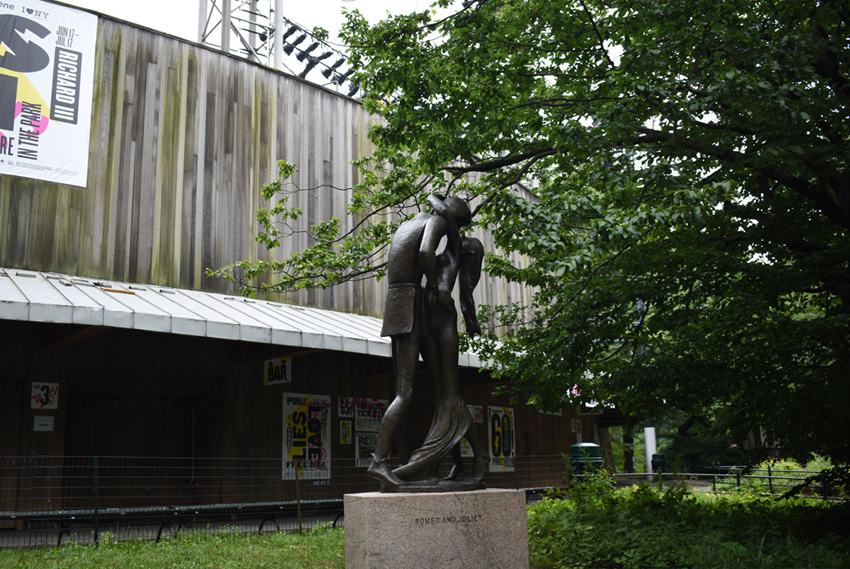
The Delacorte Theater first opened in 1962 and is best known for its much-loved Shakespeare in the Park program, which is free to all during the summer. Tens of thousands of visitors and New Yorkers line up during the season to pick up free daily tickets, and The Public Theater also hosts many paid performances, including classics. Many famous actors have walked the boards of the open-air theater, including Meryl Streep and Al Pacino, and the nearly 1,900-seat venue boasts excellent views of the stage from every seat. Tickets for Shakespeare in the Park are distributed here at 12:00 p.m. but queues can start to form as early as 6:00am.
Delacorte Music Clock

Near the Children’s Zoo and Wildlife Center, the Delacorte Music Clock is a big surprise for the park’s youngest visitors. Every day between the hours of 8:00 A.M. and 6:00 p.m., the clock plays a selection of 32 pre-programmed nursery rhymes at each hour change. Every half hour, it produces a slightly smaller musical tune.
The clock is also adorned with bronze sculptures of animals that rotate on a track around the clock while also turning on their axis. These animal sculptures include a goat playing a bagpipe, a penguin playing drums and a hippopotamus playing the violin.
Gapstow Bridge
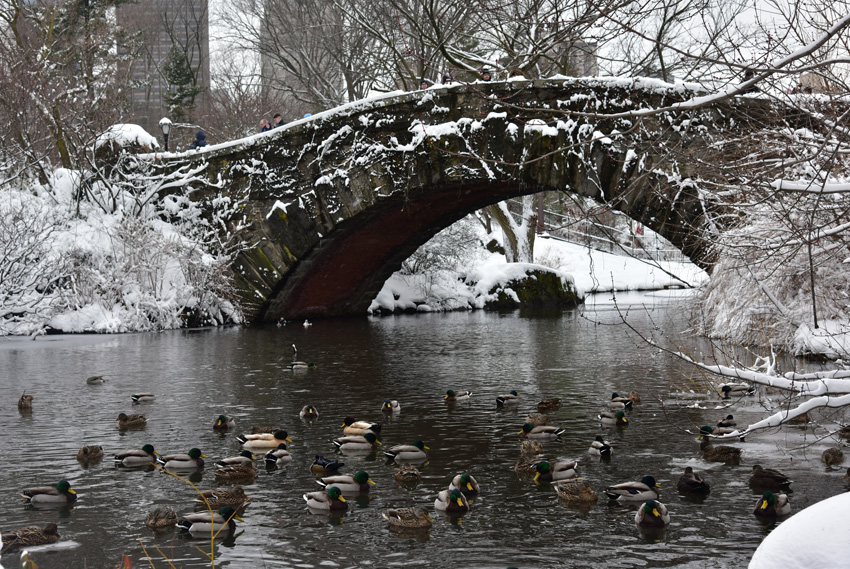
Another beautiful bridge, the Gapstow Bridge, is located on 62nd Street, and this quiet spot offers one of the best views of the New York skyline anywhere in the city. Built in 1874 at the northeast end of The Pond, the original wooden structure struggled to withstand the elements. In 1896 the original bridge was replaced with a stone structure, creating a bridge that remains calm all year round.
Frederick Douglass
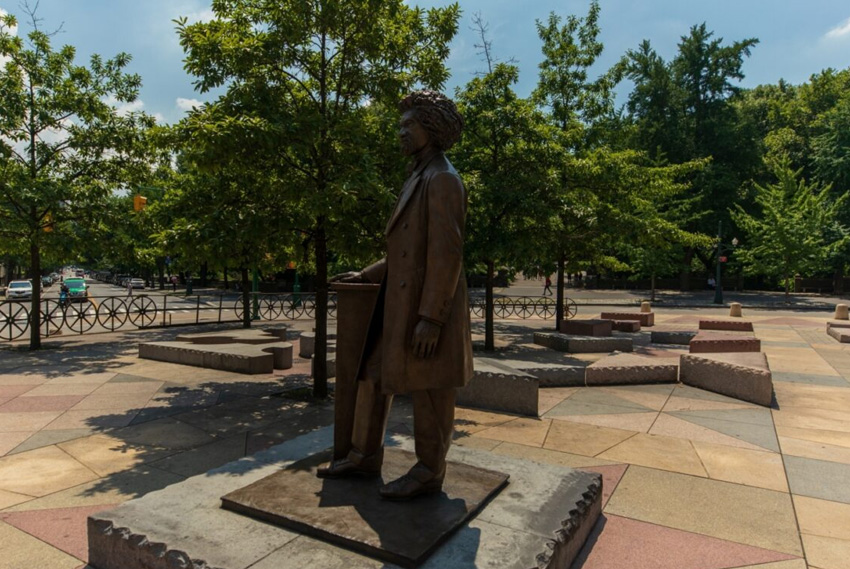
Strong abolitionist and death penalty writer and diplomat Frederick Augustus Washington Bailey settled in New York after gaining his freedom. Having met his first wife, devoted his life to the cause of the abolition of slavery and the death penalty, changed his name to Douglas. The bronze statue was unveiled in 2011.
Great Lawn

Perhaps the most iconic open space in all of New York City, the Great Lawn is a 220-acre park that stretches from 79th to 85th Streets. This section of the park has a rich and varied history and was once occupied by a large rectangular tank before it became home to displaced people during the Great Depression.
Today, however, it is the perfect place to enjoy a picnic with friends and also hosts a wide range of music festivals and outdoor performances during the summer months.
Greywacke Arch
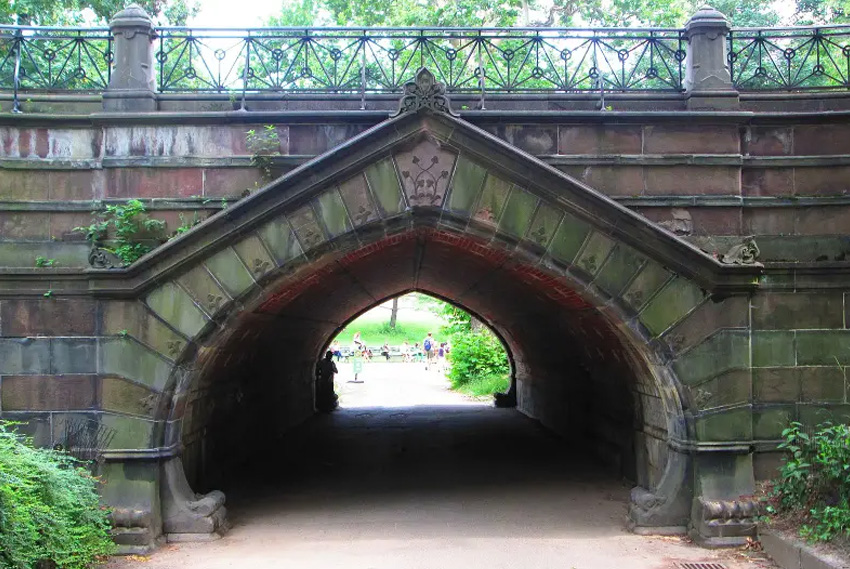
Built in 1862, Greywacke Arch underwent extensive renovation in the 1980s and is now famous for its ornamental stonework and the intricate architecture of the arch itself. Near the Metropolitan Museum of Art, this small arch is a work of art in itself.
Greyshot Arch
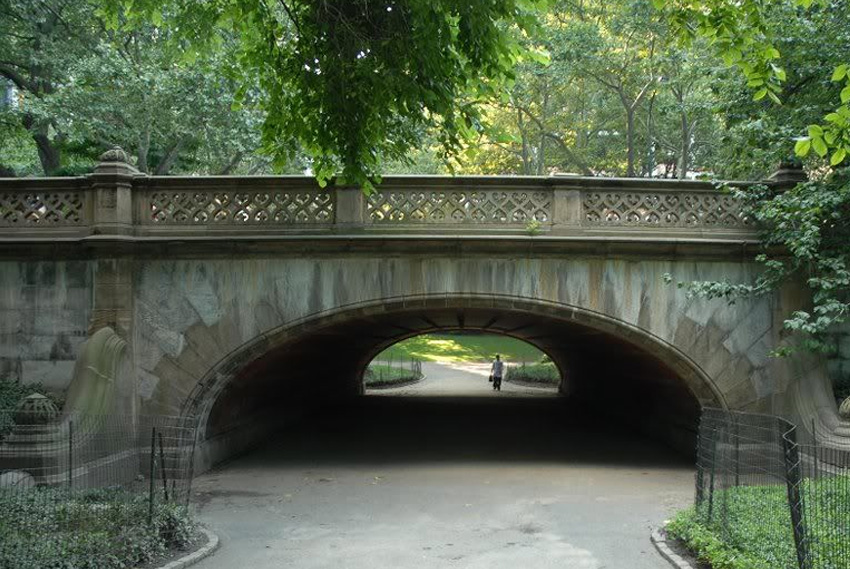
Greyshot Arch is located near the Merchants’ Gate, between 61st and 62nd Streets, and is popular with cyclists and runners who like to pass under it. Its iconic white-gray stonework and carefully crafted railing make it one of the finest pieces of architecture in the park and also one of the most frequently used.
Hallett Nature Sanctuary
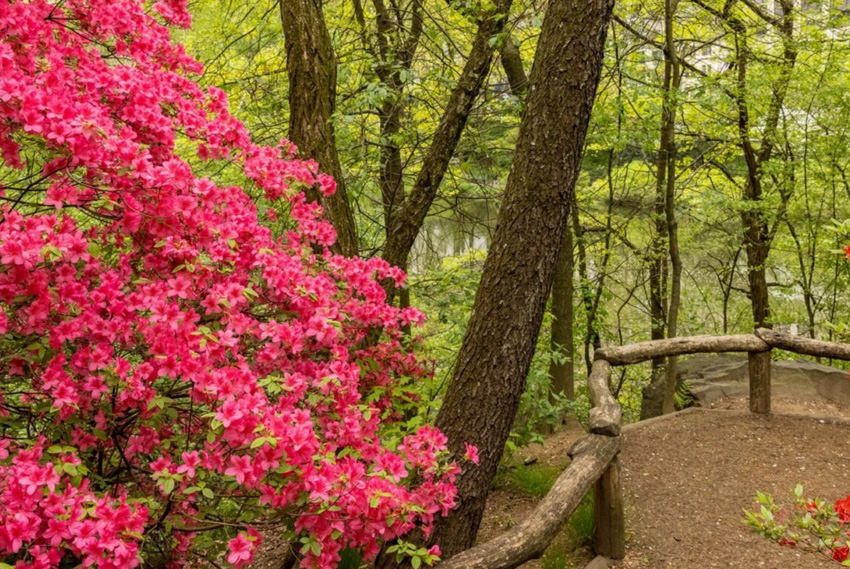
This 16-acre nature preserve is one of Central Park’s many hidden secrets and is located just northwest of the lake near 5th Avenue. Beginning as a bird sanctuary in the 1930s, the Hallett Sanctuary is now home to many different species of birds, as well as raccoons, rabbits and other animals. Tours are available year-round, weather permitting. The venue is open daily from 10:00am. to 6:00 p.m.
Hans Christian Andersen
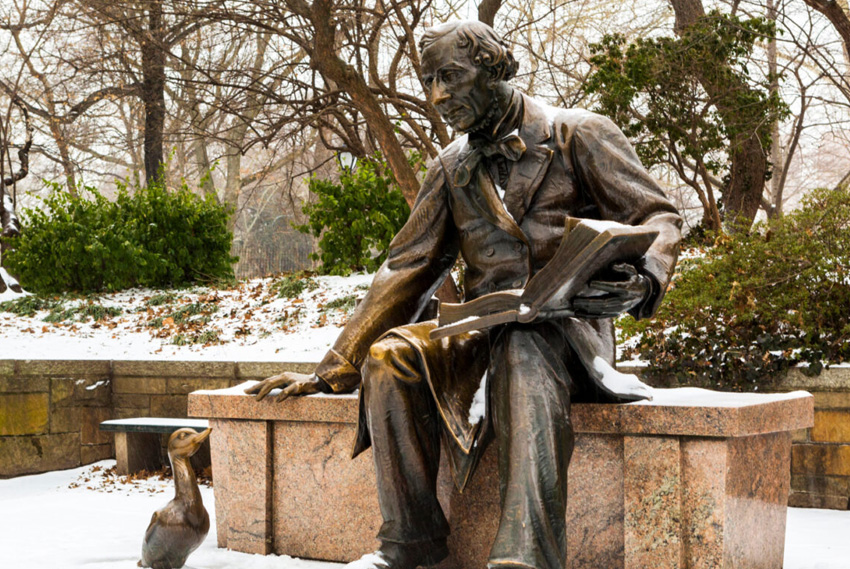
The sculpture was erected in 1956 to commemorate the 150th birthday of author Hans Christian Andersen. The bronze statue depicts Andersen sitting on a bench reading his own story, The Ugly Grandfather. It is a popular attraction for children and is designed to be climbed on and enjoyed by the park’s youngest guests. It is also popular for the Hans Christian Andersen stories that take place between 11:00 a.m. – 12:00 p.m. every Saturday from June to September. Stories are often read by professional actors.
Harlem Meer
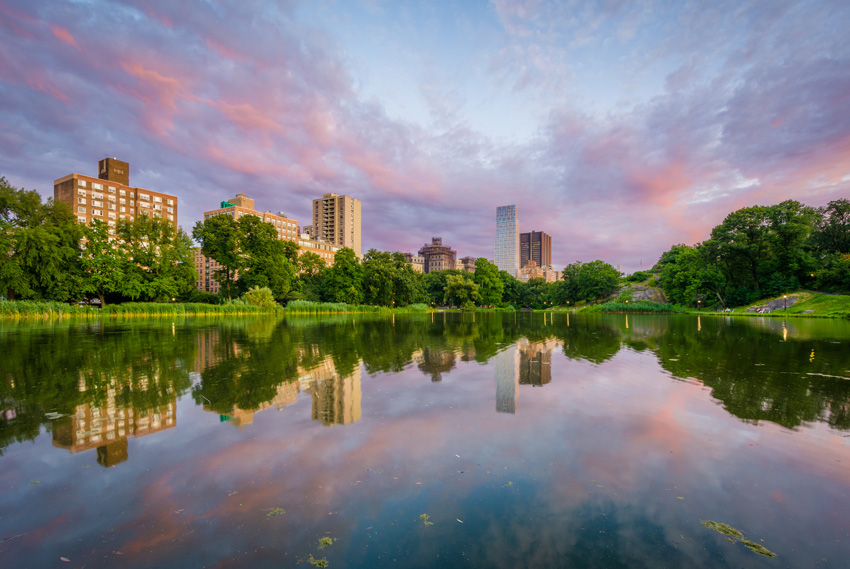
Covering 11 acres of water, the lake takes its name from the Dutch word Meer. Located to the north of the Conservatory Gardens and south of the Harlam district, it is a popular destination for anyone who wants to enjoy the water feature or relax in the lush greenery that surrounds it. The long paths leading from the cove to the water’s edge are often laden with roses and hydrangeas in full bloom. The Meer is home to a wide variety of birds and animals.
This is a great place for those who wish to participate in the popular fishing programs or for those who want to enjoy seasonal events such as ice skating or the Halloween Pumpkin Flotilla. Children can also play in either of the 2 playgrounds.
Heckscher Playground

As the oldest and largest playground in the park, Heckscher Playground offers nearly 2 full acres of slides, swings and seesaws, as well as a water system and giant climbing rocks. Running from 61st to 63rd Streets, the park has been shaped over the years to offer separate areas for younger and older children, as well as plenty of shaded areas and synthetic turf and safety surfaces. The playground is open daily from 7.30am. until dusk.
Ladies Pavilion
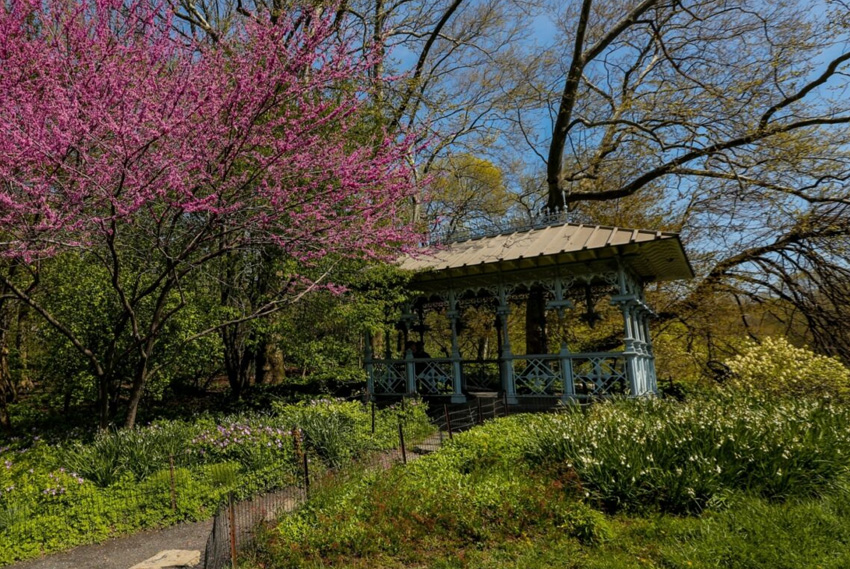
Near 75th Street on the west side of the park, the Ladies Pavilion is a beautiful and quiet spot from which to enjoy the view of the lake. Offering shelter from the hot sun or heavy rain, this patio is also one of the most photographed structures in the park and has been featured in numerous Instagram posts and fashion magazines.
Inscope Arch
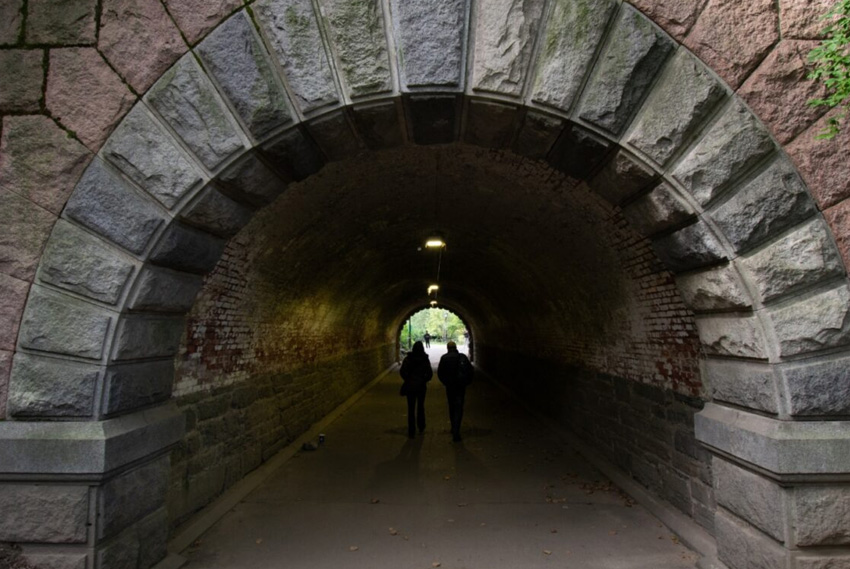
Located just east of The Lake, this beautiful little gem is a useful detour to the Wien Walk. The 12-foot-tall arch is made of pink and gray granite and has a 100-foot parapet and a 34-foot passage. Due to its location, Inscope Arch can be prone to flooding during the winter months.
Loeb Boathouse
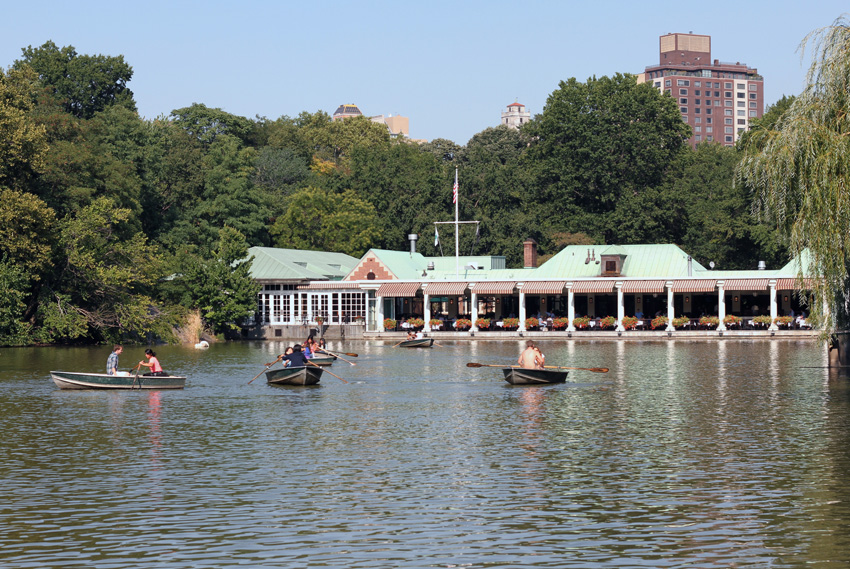
If you want to explore the park from the water, then renting a boat or taking a gondola ride from the Loeb Boathouse is the perfect way to do it. The Boathouse has a shuttle that stops along 5th Avenue and the Metropolitan Museum parking lot, and daily boat rentals are available. The Loeb Boathouse is open Monday through Friday from 12:00 p.m. and 3:45 p.m. and again between 5.30 p.m. and 9:00 p.m. On weekends it is open from 9:00 am. to 3:45 p.m. and again between 6.00 p.m. and 9:00 p.m
Naumburg Bandshell
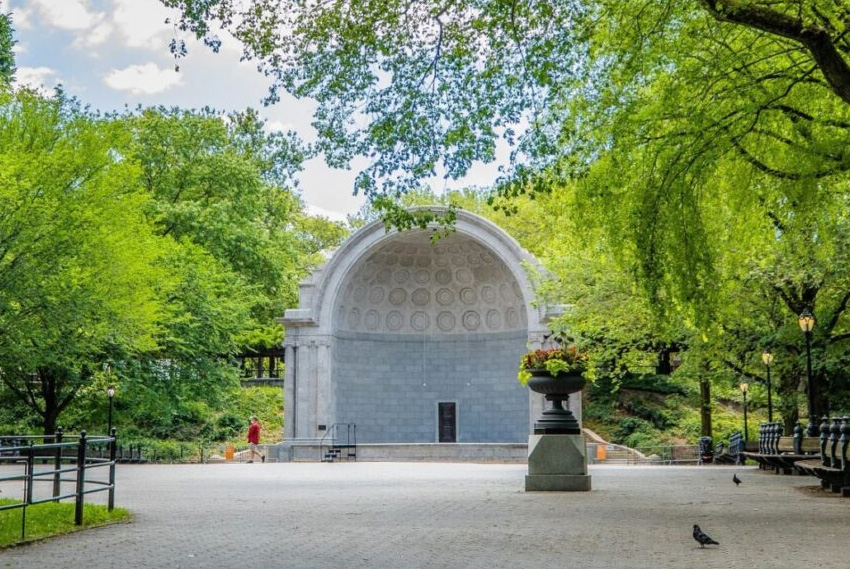
Central Park has an excellent reputation for offering great outdoor entertainment year-round. While the Naumberg Bandshell was originally designed to be a simple bandstand, throughout its history, it has become an iconic stage of great historical significance, including speeches by Dr. Martin Luther King, Jr. and the eulogy for John Lennon.
It was built in 1862 and usually held free concerts on Saturday afternoons that attracted locals during the summer season. As the popularity of these events grew, the original pavilion was replaced in 1923 by the Wisteria Pergola, given to the city by banker Elkan Naumburg.
In the 1980s, this corner of the park became best known for the SummerStage music festival, and today the Naumburg Bandshell organizes a year-round program of events for everyone.
North Meadow
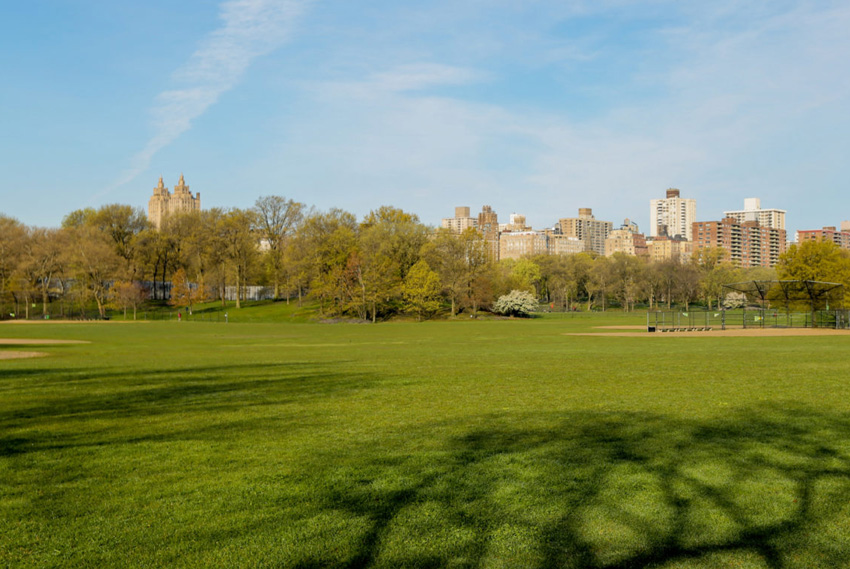
Just north of the Great Lawn, North Meadow is located on 97th Street and offers 95 acres of athletic fields. football, baseball and rugby fields. The Meadow offers a program of sports lessons and events throughout the year.
Nell Singer Lilac Walk

During spring, this quiet part of the park transforms into a blossoming bouquet of lilacs from around the world. The striking purple, pink and white flowers attract admirers from all over the city, and the path also offers a clear view of the famous New York skyline. Designed and funded by philanthropist Nell Singer, the Lilac Walk has been a hidden gem in the park since 1970.
Obelisk (Cleopatra’s Needle)

The Obelisk was created around 1425 BC. in the Egyptian city of Heliopolis, north of present-day Cairo. It is located on a rocky hill known as Greywacke Knoll, opposite the Metropolitan Museum of Art.
Central Park is the third location for this 220-ton monolith, which is a single piece of stone carved from granite in the Aswan quarries, an important source of stone for Egyptian antiquities. It was one of two obelisks commissioned by Pharaoh Thutmose III for the Temple of the Sun at Heliopolis. Scholars believe that obelisks represented eternity and immortality, and their long, tapering form functioned to connect heaven to earth. Their tops were usually covered with gold to reflect sunlight.
When the Romans discovered the two obelisks in 12 BC, they had fallen and were partially buried in the sand. The Romans moved the obelisks to Alexandria and placed them at the entrance to a temple dedicated to Julius Caesar. The temple was built by Cleopatra, which is associated with the name of the obelisk “Cleopatra’s Needle”, which still remains.
In the 1870s, the Egyptian government gave one obelisk to England, and the second obelisk was given to the United States by Khedive Ismail Pasha to commemorate the opening of the Suez Canal. Removing the Obelisk and transporting it to New York took more than a year and was a major feat of logistics, diplomacy and engineering. It was installed in Central Park in January 1881.
The Ramble
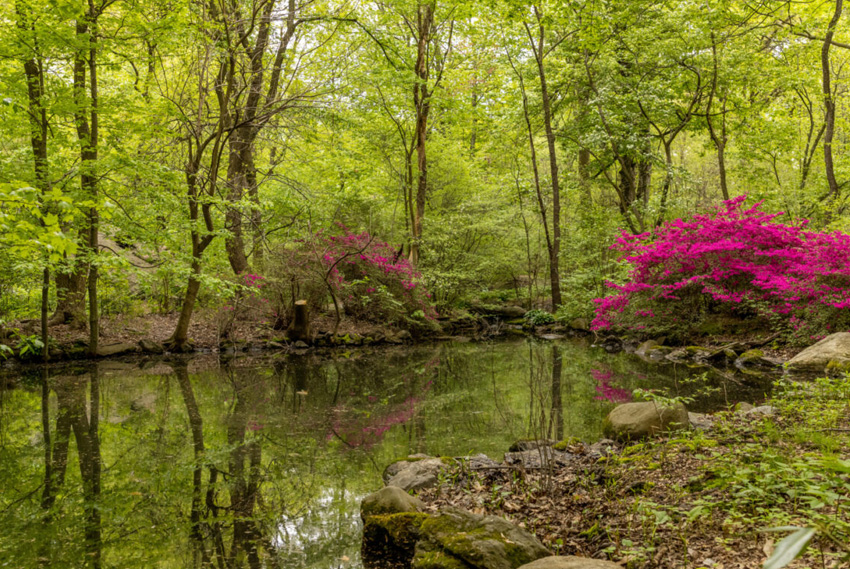
Covering 35 acres of wooded land and winding paths between 73rd and 78th Streets, The Ramble is a natural wooded area that stands in contrast to the more formal gardens and walkways found throughout the rest of the park. The Gill, a man-made stream that runs through The Ramble, adds extra atmosphere to the wild feel of the forest, and you might even see raccoons there.
Pilgrim Hill

This steep hill is a favorite spot for sledding during snowy winters and is also popular for family gatherings and birthday parties when the weather warms up again. Near Conservatory Water on 72nd Street, the hill is named after the statue of pilgrim John Quincy Adams Ward, which stands on a hill overlooking East Drive. With cherry, magnolia and apple trees surrounding Pilgrim Hill, it is a relaxing and beautiful spot from which to enjoy the park at your feet.
Rumsey Playfield
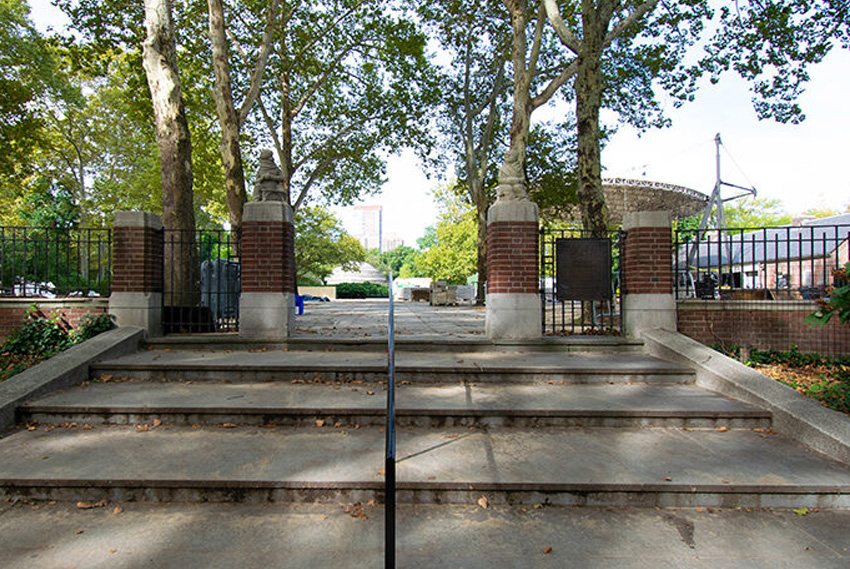
Just off the 5th Avenue and 69th Street entrance to Central Park, Rumsey Playfield hosts a variety of concerts and events throughout the year, including the GMA Summer Concert Series and the SummerStage Festival. If you want to see great shows in New York, you’re guaranteed to see them here.
Shakespeare Garden
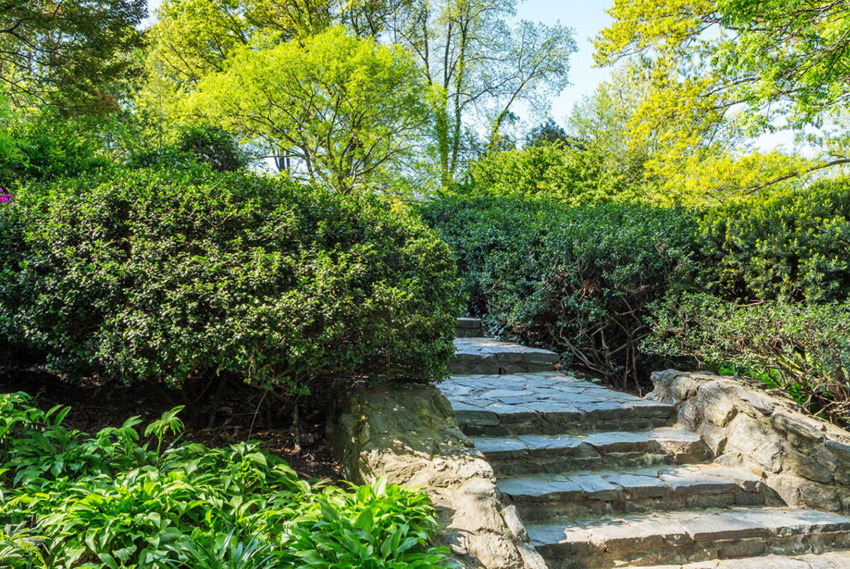
Another lesser-known attraction in the park is the 4-acre Shakespeare Garden, which includes plants that have been mentioned in the Bard’s greatest works, including rosemary, pansies, thistles, and even a mulberry. Along the route are copper plaques, all with excerpts from his famous works. The garden is also home to some of the beautiful plants and flowers you can find in Central Park. The Shakespeare Garden is open daily from 6:00am. to 1:00 a.m.
Sheep Meadow

Open from May to mid-October, this 15-acre field is no longer used for livestock grazing, but is popular for sunbathing, kite flying and relaxing summer picnics. While the meadow was originally intended to serve as a parade ground for military exercises, this idea was not in keeping with the original design of the park. Instead, it was used for sheep grazing until the 1930s. In recent years the Meadow has been used for a variety of protests, outdoor concerts and hippy activities, although now it’s just a big open space for everyone to enjoy.
Still Hunt

Perched high on a large stone, this bronze panther looks ready to attack passers-by. Designed and created by the American sculptor Edward Kemeys, the original idea was for the statue to appear completely realistic in terms of its position and to be able to blend in with the landscape around it. In keeping with this concept, there is no plaque to read information about the statue, but those looking for it can find it on 76th Street along East Drive.
Strawberry Fields

Strawberry Fields is a memorial to British rock musician and peace activist John Lennon (1940–1980). The memorial consists of a 20-acre landscape near the West 72nd Street entrance and includes the Imagine mosaic, where many come to pay their respects to Lennon. The memorial’s name is a reference to the 1967 song Lennon wrote and performed with The Beatles, ‘Strawberry Fields Forever’.
Plans for a memorial to John Lennon began to take shape soon after his death. It began with the city’s decision to name the area of Central Park across from the Dakota Building, where he and his wife, Yoko Ono, lived and where he liked to walk, Strawberry Fields. Ono then began planning a memorial in this landscape and invited countries from around the world to contribute plants as well as stones to create an international peace garden. Ono’s idea was shaped by Lennon not wanting a traditional memorial in the form of a statue.
The design of Strawberry Fields incorporates small areas of trees and shrubs and a path that crosses a small, wooded area. While focusing on the landscape, the design also includes a sidewalk mosaic with the word Imagine in the center, donated by the city of Naples, Italy. Surrounded by benches, the area is a focal point and gathering place for the many visitors who come to pay their respects to Lennon. A plaque placed on a rock ledge recognizes the countries that contributed.
Strawberry Fields was officially dedicated on October 9, 1985, the 45th anniversary of Lennon’s birth. When it opened, Strawberry Fields provided a rare alternative to traditional monuments, in the form of a living landscape that changes and grows over time.
Summit Rock
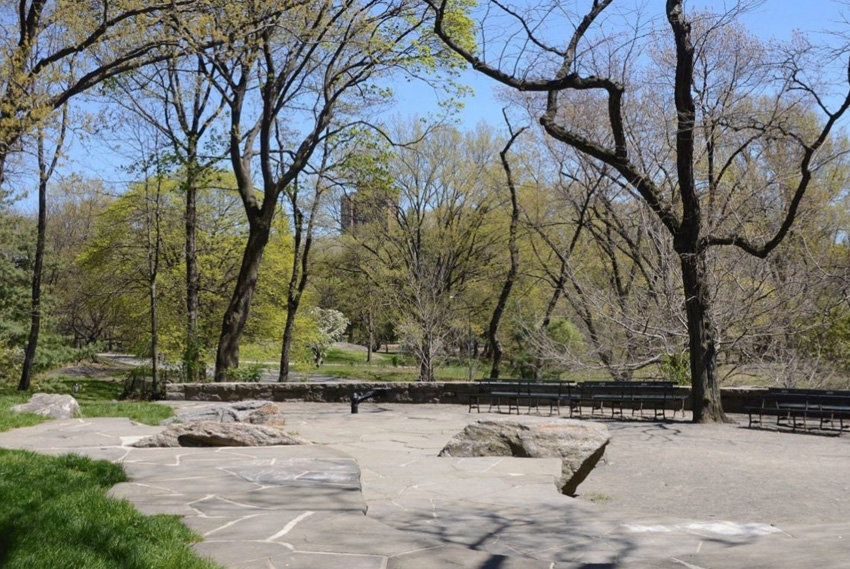
Summit Rock is the highest natural point in the park and was originally the site of a Seneca village during the 19th century. Visitors can climb to the top and enjoy stunning views all the way to New Jersey. It’s also a popular spot for runners and cyclists who want to really feel that sensation.
Swedish Cottage

Swedish Cottage is home to one of the last public puppet businesses in the United States. Puppeteers have been working in this cottage since 1947, moving the strings of their hand-carved puppets and bringing all the classic fairy tales to life.
Originally built as a model prefabricated schoolhouse, it was transported to Philadelphia to appear as Sweden’s exhibit at the 1876 Centennial Exposition. The designer of Central Park, Frederick Law Olmsted was impressed by the rustic building and at his urging it was dismantled and moved to Central Park.
After a number of different uses – a nature study center for children and an entomological laboratory – the cottage became home in 1939 to the Parks Department’s traveling Puppet Theatre. It is best known for its productions of the classic fairy tales Peter Pan and Cinderella. Under the direction of the city’s Parks Foundation, the charming productions are among the best attractions for families.
Tavern on the Green
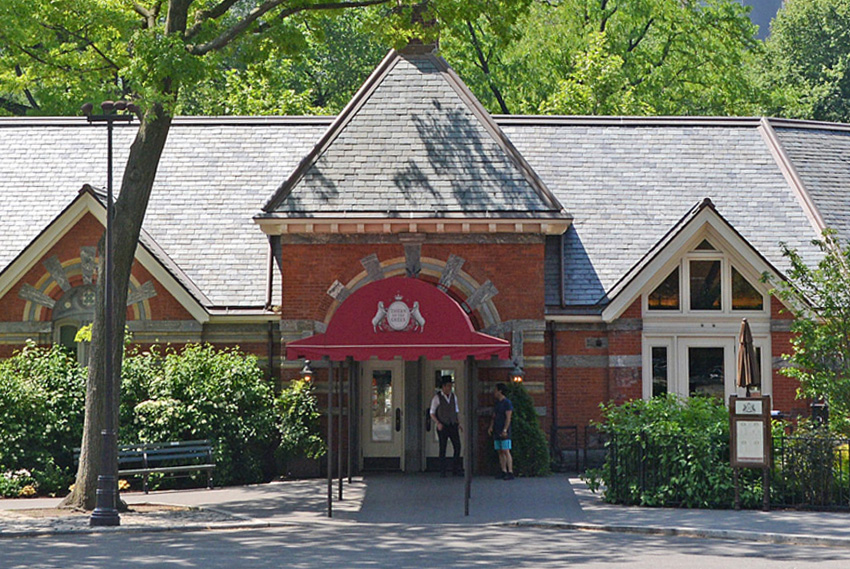
Located right in the heart of Central Park, this iconic New York restaurant is renowned for serving local and artisanal food in a traditional tavern setting.
What began as a sheepfold in the 1880s to house up to 700 sheep is now one of the most popular restaurants in New York, and thanks to the incredible number of movies and TV scenes that have been filmed there, it’s one of the most instantly recognizable places, too.
This New York tavern has been serving food since 1934, and over the decades, many celebrities such as Grace Kelly and John Lennon have stopped by, as well as hosting many Broadway shows.
Once the second highest grossing business in the US, it suffered a severe downturn in the 2000s, but has since been rebuilt and is thriving once again.
Tavern on The Green has varied brunch, lunch, dinner and bar hours.
Tennis Center

Offering a choice of 30 different courts for public use, the Central Park Tennis Center is the perfect place for beginners to learn tennis as well as experienced players to improve their game. Surrounded by the stunning beauty of the park, players here can enjoy group and individual lessons, as well as summer lessons for children. Whatever your ability, it’ll be pretty cool to say you’ve played on the same courts as famous tennis players like Andre Agassi and Bjorn Borg. The courts are open daily from 6:30 am until dusk.
The Arsenal

This unusual brick building served as a police station, weather bureau and surprisingly, even a zoo before becoming the art gallery it is today. Originally built to store arms and ammunition for the New York Militia in 1848, this unique little building is located on 64th Street, just off 5th Avenue. The Arsenal is open Monday to Friday from 8:00am. to 5:00 p.m. It is closed on weekends.
The Henry Luce Nature Observatory

The Henry Luce Nature Observatory is a great educational space for those who want to learn more about nature and wildlife in Central Park. The observatory is named after philanthropist and TIME magazine founder Henry Luce.
Although the observatory is small, it offers discovery kits for exploring the park and also has telescopes and microscopes. The second floor of the observatory is a great spot for bird watching.
The attraction is located within Belvedere Castle and is free to visit between Tuesday and Sunday from 10:00am. to 5:00 p.m.
The Lake

This picturesque 20-acre lake began life as a murky, wild swamp until it was excavated in the 1850s. As the second largest body of water in the park, the lake is the perfect place to go boating and see firsthand the diverse wildlife and birds that call the lake home.
The Loch
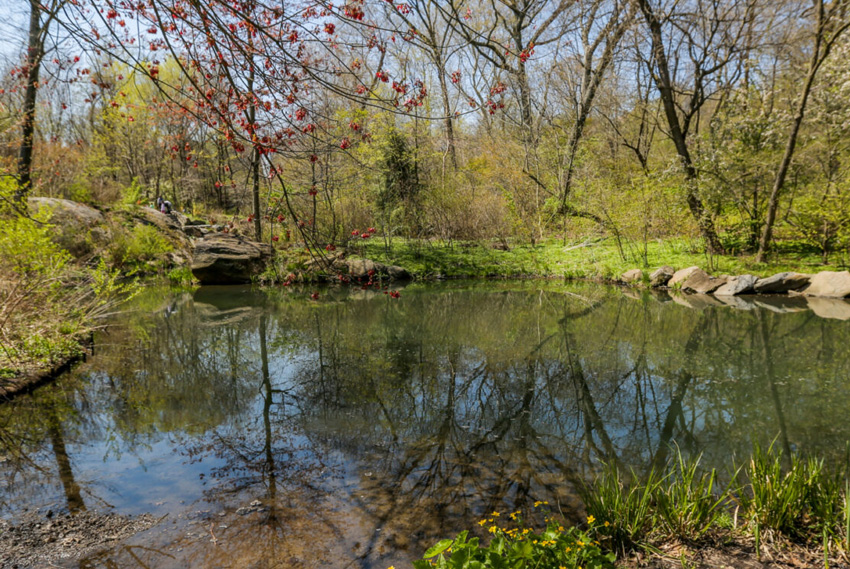
As part of the original plan for the park, The Loch forms part of the North Woods and is considered an excellent spot for bird watching. What was once intended to be a much larger lake eventually became just a calm stream that offers peace and tranquility in the heart of the city. The Loch stretches from 102nd to 106th Streets and is near the Huddleston and Glen Span Arches.
The Mall

This amazing walkway runs through the middle of the park from 66th to 72nd Streets. The Mall was specially designed to fit the width of the old horse and carriages, making it a great entry point for those visiting the park. Today, The Mall is more likely to be a meeting place for skateboarders, rollerbladers, street artists and park-loving visitors than a horse and carriage. It also has one of the largest plantations of American Elm.
The Pond

This peaceful oasis is located deep in the heart of the park, but still at street level, offering easy access to anyone looking to take a breather from the busy city streets. The serene lake is also home to a wide range of migratory bird species, as well as a wealth of flora and fauna that make their home on the banks, including apple and forsythia trees.
The Pond is located near the Hallett Nature Reserve, making it a popular spot for anyone looking to enjoy the park’s natural areas.
The Reservoir
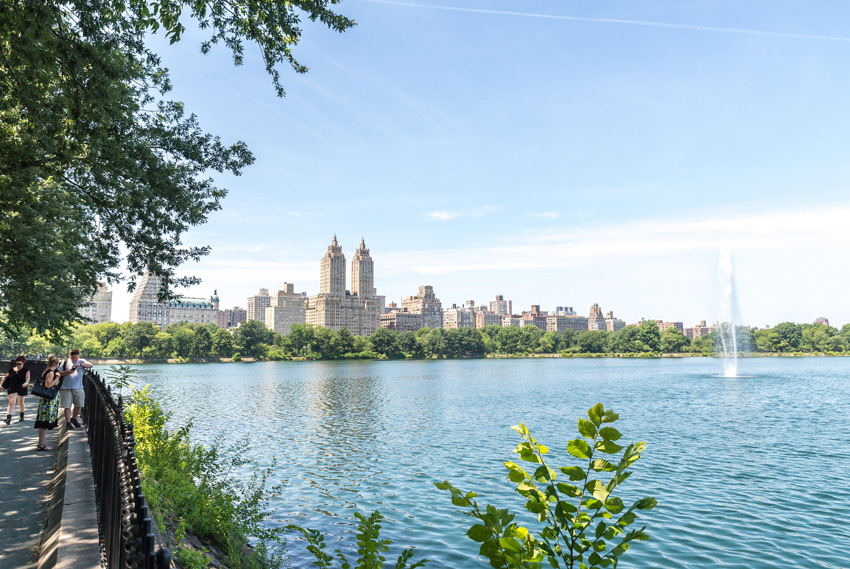
Officially known as the Jacqueline Kennedy Onassis Reservoir, the lake is surrounded by a 1.5 mile course that is popular with runners who come to burn calories while enjoying great views of the city skyline. It is also a favorite spot for bird watchers who come to see the herons, egrets and coots that have made the lake their home.
Tisch Children’s Zoo
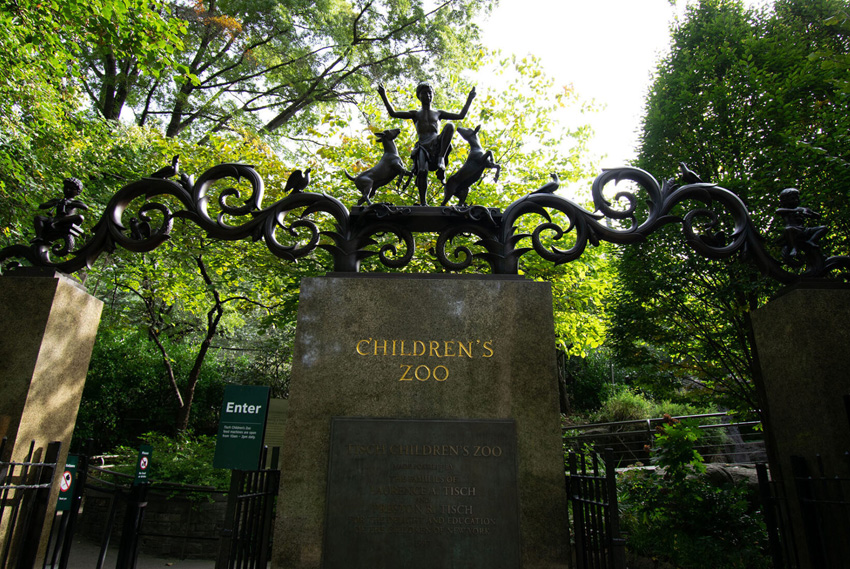
Tucked away in the main zoo, the Tisch Children’s Zoo is a unique attraction designed especially for young children. Named after one of its biggest supporters and contributors, businessman Laurence A. Tisch, the children’s zoo allows children to feed and touch goats, sheep, cows, pigs and other small domestic creatures.
There are also daily shows performed by Acorn Theater actors as well as lots of interactive displays and statues to help little ones learn about the animal kingdom. Entry to the Children’s Zoo is included in the main zoo ticket price and opening hours are the same.
Trefoil Arch

This 16-foot-tall arch was constructed to provide a covered connection of Conservatory Water to The Lake. Both sides of the arch have different designs in Gothic style on the east side and traditional, rounded arch on the west side. There are also beautiful cast-iron balustrades with intricate quatrefoils on either side of the arch, as well as supports decorated in a floral pattern.
Turtle Pond

Located at the base of the beautiful Belvedere Castle, the pond takes its name from the large number of turtles that have lived in its waters since the 1980s. A man-made body of water, the Turtle Pond was restored and improved in the late 1990s, making it not only more beautiful to look at but also a more functional home for the park’s wildlife by adding trees and shrubs for nesting. Turtle Pond is one of the park’s designated quiet zones.
Victorian Gardens

Since 2003, Victorian Gardens has been home to a traditional amusement park and is one of only a few located in the New York metropolitan area. It is open during the summer months and is located in the same spot that turns into the Wollman Ice Rink during the winter. From May to September, families come to enjoy the rides, games and food stalls.
Wagner Cove

Nestled on the edge of The Lake, Wagner Cove is home to trees and flowers and offers a peaceful haven away from the hustle and bustle of the city. The rustic log cabin on the cove is the perfect place to relax and is located just west of Cherry Hill. Visitors can enjoy a scenic walk to Wagner Cove from 72nd Street.
Waterfalls

Central Park is home to over 5 different waterfalls, all man-made. Most of them can be found in the Ravine section of the North Woods, and the cascading water comes from a huge pipe hidden by the rocks in the Pool Grotto. Much of New York’s drinking water comes from here, making these falls a useful and beautiful addition to the park.
Wisteria Pergola

As part of the 3 separate spaces that comprise the Conservatory Garden, the Wisteria Pergola is a long patio that is laced with vines that wind through the structure’s wooden supports. Beautiful as a picture, the Wisteria Pergola is a popular wedding location and very popular with those who want to take the best pictures for Instagram.
Wollman Rink

Wollman Rink is the second of Central Park’s famous ice rinks. It offers ice hockey and skating, as well as a skating school, children’s parties, skate rentals and lockers.
With its iconic location in Central Park and views across the city, Wollman Rink has been featured in many Hollywood movies and is instantly recognizable to many visitors. The rink is open from late October to early April.
Women’s Rights Pioneer Monument

Featuring the bronze figures of Sojourner Truth, Susan B. Anthony and Elizabeth Cady Stanton, the Women’s Rights Pioneers Monument commemorates the centennial of the ratification of the 19th Amendment, which gave women the right to vote. Sponsored by the group Monumental Women, it was unveiled in August 2020, and is the first in the park to depict real women.
Sculptor Meredith Bergmann shows the three women as activists at work: Sojourner Truth speaking, Susan B. Anthony organizing, and Elizabeth Cady Stanton writing. These visionaries (they were all New Yorkers) join William Shakespeare, Robert Burns, Sir Walter Scott and Fitz-Greene Halleck at the south end of the Mall. While honoring the specific efforts of Truth, Anthony, and Stanton for women’s suffrage, women’s civil rights, and the abolition of slavery, the Women’s Rights Pioneers Monument also recognizes the importance of women’s representation in New York’s iconic park.


